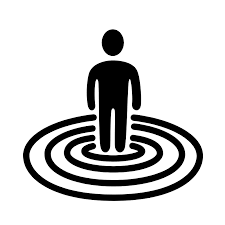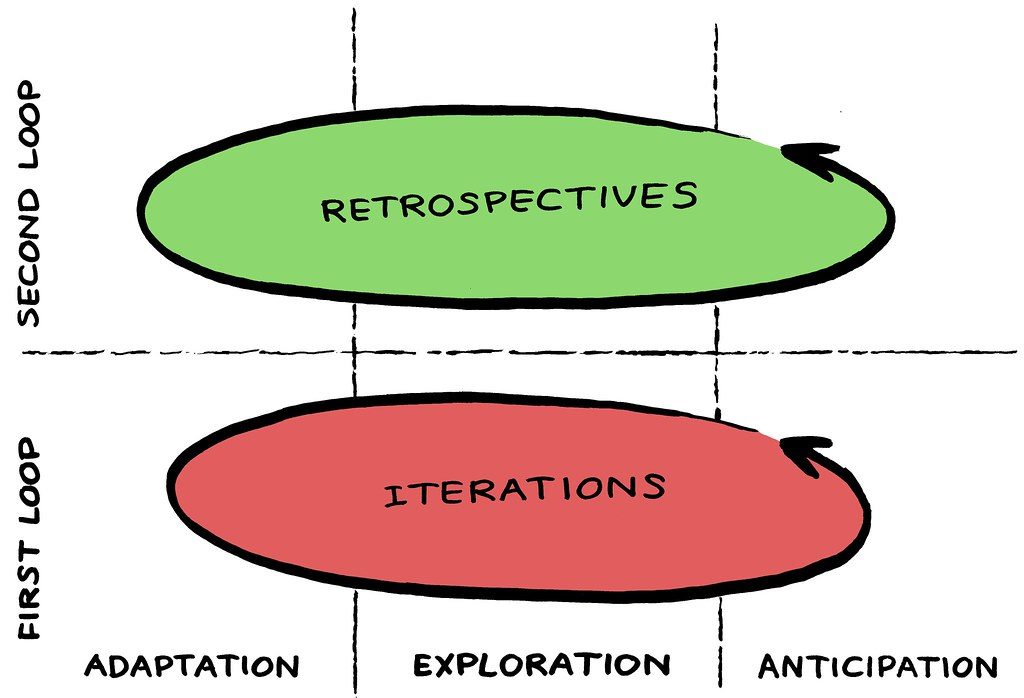This is the second part “Scrum Master in quarantine”, article in which I share my own experiences. See part one.

Focus on people
Some people claim they are more efficient when working from home as they can avoid sitting in a noisy open space. This can be true, especially when they do this occasionally, but does the same apply to where we are now – doing home office day by day for a longer period of time?
I actually did that some years ago, before I got to know Scrum. It was comfortable – I was able to start working whenever I wanted, do the private stuff when needed, or stay in pyjama and in bed all day long. Sounds like a dream job? Yes it does, but on the other hand… I had that feeling I was at work all the time. I first checked e-mails at 9 a.m. and the last time at 11 p.m., whenever something popped up in my mailbox, I was dealing with it regardless the hour. I could easily say that I spent 14 hours a day at work, while the job I delivered in that timeframe, could have easily be done in 4 to 6 hours of effective work with no distractors around. Isn’t it a paradox…?
That was my first home office touch. Now I believe I am much more experienced, responsible and self aware, so I will probably be much more efficient as well. How does it work for your team, is day-by-day home office something new to them? Who’s got at least one month of such experience, what will be hardest for them, do you know if they like or dislike it? Finding answers to these questions is crucial to you as a Scrum Master, and you should have your answers in the early days of team’s quarantine.
How to get the answers then?
- Speak with the team – with all of them together, but also with each of them individually.
- Listen to the team – to what they say, but also to what they don’t say. Reading between the lines and understanding the silence is one of the most important skills which may help you while being remote Scrum Master.
- Use retrospective to discuss team experience and feelings – concentrate directly on the people, not on the procedures or tools.
- While being in one place you probably are able to see people’s mood – while you are remote you need to ask about it. Don’t be afraid of that – ask about the mood, feelings, fears. This will help you to create safe and trustful environment.
- Ask and give feedback – in this new situation people will need that, so will you.

Avoid traps
Below is a list of most popular risks which may impact people’s efficiency. As a Scrum Master you should be aware of them and be able to help people avoid them.
Rhythm dissonance – previously people lived some patterns: get up, have your breakfast, commute to work. Those repeatable activities set proper mindset – I’m prepping myself to leave to work, and I will work for 8 hours now. When my workday is over, I’m leaving the office and get back home to spend time with the family and friends. Now the daily routines are gone, so people may have problems with getting their mind set right.
Solution: try to keep rituals, but adjust them to the current situation. Always get up in a bit of advance, get dressed (never work in pyjama!), eat breakfast, and never open your laptop as the very first thing in the morning. You can have ‘work clothes’ for office hours and change them after work, you can have special desk or chair, where you work and clean work stuff at the end of the day – so that anything being a big light neon for your brain saying “I am at work” is kept clear of your sight in the evening. And when you are at work, you should still remember of having lunch and coffee breaks. If you don’t eat at your desk in the office, you should also avoid it at home. Last but not least – there should also be the closing ritual, ending your work – like at least saying goodbye to your teammates and closing (really closing!) the laptop.
Family – since I’m at home, I can use the opportunity and do home stuff in the meantime, right? Well… not really.
Solution: Keep it clear with your family, what are your working hours. Physically you can be at home, but mentally you need to be at work. It is needed not only to be able to focus on work during 8 hours per day, but also to be able to focus on private life during the remaining 16 hours. You should set up clear rules when you are not accessible for them.
Loneliness and burnout – the longer you work from home, without possibility to meet other people, the more alone you can become. Rising frustration, feeling disconnected from social contacts, stagnation, boredom – all of this may come, when you will get stuck in between 4 walls. You can also try hard to meet company expectations, especially if the expectations are the same as before, but conditions are less favourable now. It may easily lead to over hours and fast burnout.
Solution: remember that work should not only be efficient, but also should bring fun to people, encourage them to self development and collaboration. Constant pace – this is one of the Agile Principles, saying that the team should be able to maintain their delivery pace indefinitely. Even if this means working remotely indefinitely. While working from home you need to keep proper balance between work and fun, between focus on individual tasks and team workshops. If you don’t invest enough time into maintaining team spirit, team members will flow away from the team.

Inspect & Adapt as usual
For most of us working environment have changed rapidly. This is a great opportunity to see how agile we are and how fast we can adapt to new conditions. Agile is all about adaptation and fast feedback loops. Use it to your advantage and inspect & adapt as frequently as you can. In the early days of quarantine you should not wait till the retrospective to implement changes and improvements.
This situation is similar to starting a new project or forming a new team, as your whole environment has changed.
At the early stages then, the fast and extended inspection and adaptation is crucial to achieving a success.
By the way – do you remember that Daily Scrum is also an event when you can inspect and adapt? It’s mainly driven by Sprint Goal, but you can use it also as a mini-retrospective and improve the way you work. Don’t waste this chance.
And how you, as a Scrum Master, are dealing with quarantine team? Please share your thoughts and experiences in comments.